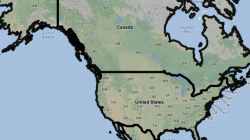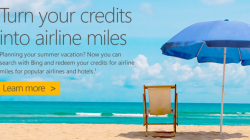Some readers have recently peppered me with questions about booking travel on a partner airline using miles in a different program, so I’ll write a refresher post. There are three essential rules to remember when booking partner award tickets.
Rule #1: You’ll follow the award chart and redemption policies of the airline that issues the miles, not the airline you fly.
This is good and bad news. Different programs have different prices and access to different award space. Is it more valuable to have 25,000 British Airways Avios or 30,000 Alaska Airlines miles? It depends, but simply saying more is better is not correct.
Another reader wanted to transfer ThankYou Rewards points to Qantas and then transfer them again to Emirates. You can use Qantas miles to book travel on Emirates under the rules of the Qantas program, but you can’t transfer them to Emirates directly.
Rule #2: You can’t transfer miles between airlines. With very, very few exceptions your miles are stuck with the airline that already holds them.
I’ve also been asked about how to redeem “Star Alliance” miles. It matters much more if the miles are issued by United Airlines or Singapore Airlines, for example. Each has different rules and prices even though you can redeem United miles on Singapore and vice versa.
What is relevant is that sometimes two programs have the same transfer partners. Again, go back to Rule #1. Both United and Singapore are partners with Ultimate Rewards, for example, so keep this in mind before transferring Ultimate Rewards points. If the two carriers have access to the same award (sometimes but not always true), then one might allow you to redeem fewer miles or pay lower fees.
Rule #3: Using miles for travel on a partner isn’t without its complications.
Agents for the airline that issues the miles may be unfamiliar with their own rules or rely on buggy computer systems. Travelers need to be educated about what is and is not possible and watch carefully to catch honest mistakes.
Furthermore, the tradeoffs when booking award travel are different from those for booking paid travel. In either case the price is usually the same, but availability tends to be much more scarce for award travel. Thus, an award traveler should be willing to make additional connections or travel at less convenient times in order to obtain what is, overall, a better itinerary (e.g., in a higher cabin class).
Here are some examples of what I’m describing:
Alaska has a rule that only one partner can be booked at a time, but some agents aren’t aware that KLM and Air France are considered the same because they share a common program, Flying Blue. Combining them creates more flexibility when booking intra-Europe awards.
United Airlines will not display Singapore Airlines award space. Period. But even Singapore’s business class is a better (and cheaper) experience than United’s first class to Asia. You have to know to call an agent on the phone or search elsewhere to find this award space.
American Airlines’ mobile automation system is outdated, and some of their agents are not well educated on international partners. During a recent attempt to book an award from Tokyo-Haneda to Kuala Lumpur, I was misinterpreted as asking for Tokyo-Narita several times — by human and machine.
British Airways generally has a good award search tool, but it does not handle connecting flights well. On that same attempt to book award travel to KUL, an online search returned zero results until I performed separate queries from HND to HKG and then HKG to KUL.
Staying familiar with the rules and exceptions for partner awards will help you enjoy traveling more and get better value from your miles. It can mean the difference between no award space and lots of award space. It can result in a better overall experience with premium carriers. And it can unlock opportunities for cheaper prices that let you travel more often.


